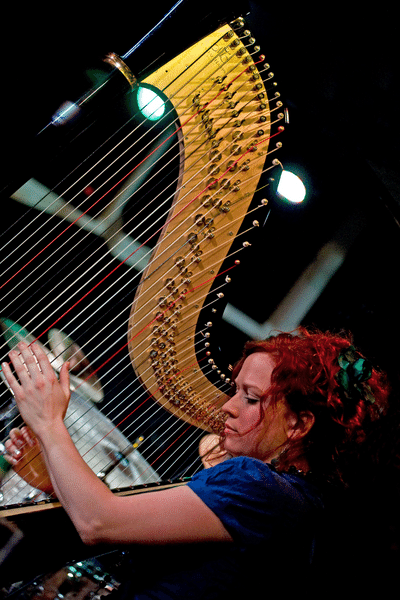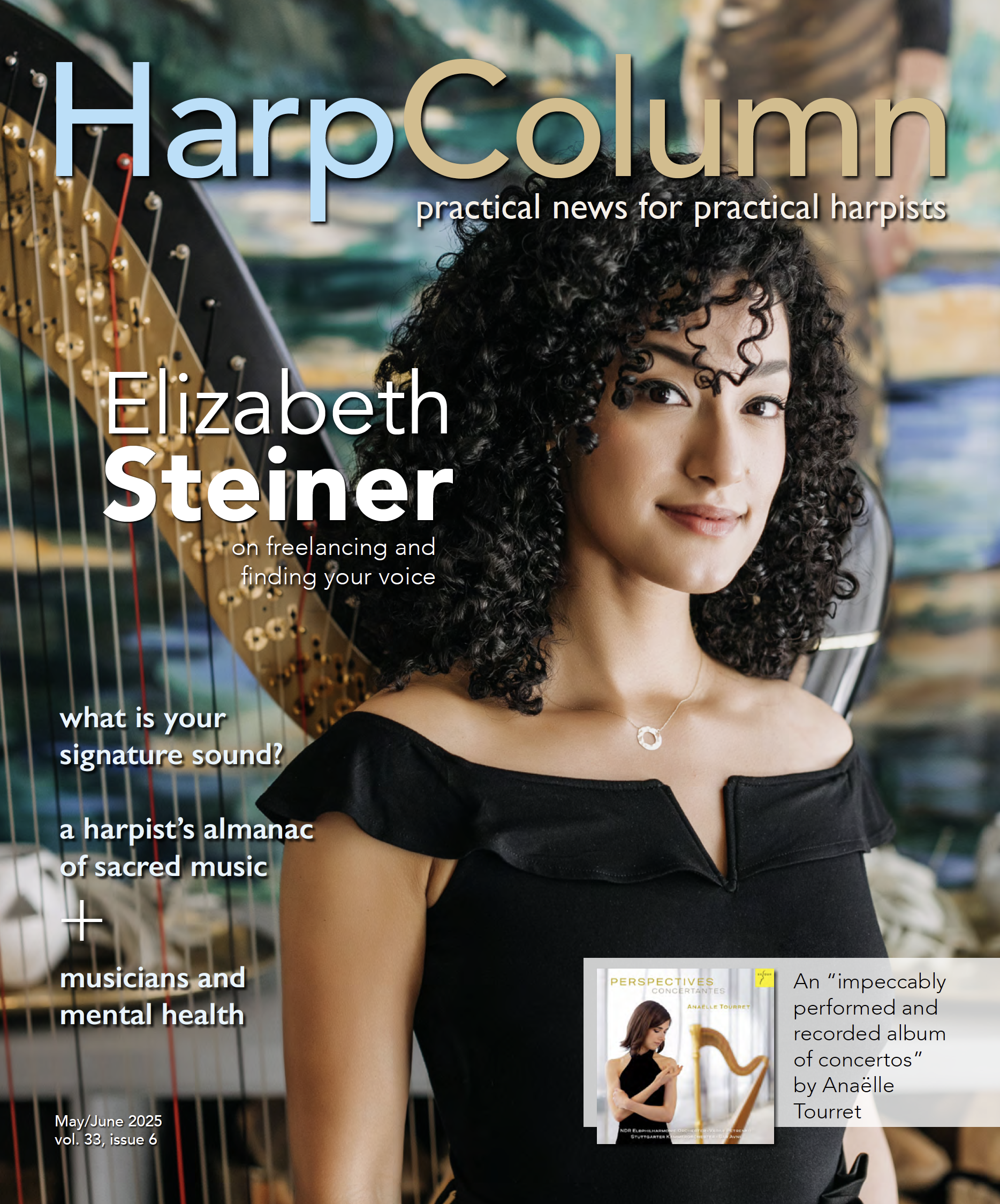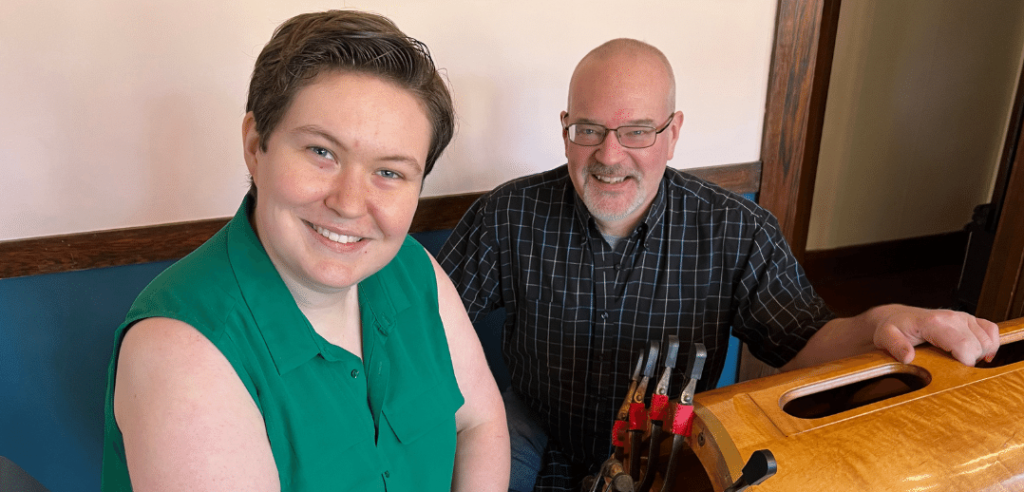Bollywood is the common name of the Indian movie industry, which produces films in the Hindi language. The name “Bollywood” is a play on the American movie industry in Hollywood. It comes from the former name of Mumbai (Bombay), the city where most Indian movies are made.
In this installment of our Job Shadow series, we’re investigating a career choice perfect for harpists who love music of all genres. Session musicians get the chance to record with a diverse range of artists, many of whom are influential in their fields. Rachael Gladwin is a session harpist based in the United Kingdom. Gladwin says there are many ways to get involved in the session industry. Some musicians record on orchestral soundtracks for hit movies. Others, like Gladwin, are asked to record additional instrumental parts for songs and albums. From studio sessions to remote recordings from home, Gladwin has recorded on about 70 albums, singles, and other projects. She’s worked with many well-known artists from the U.K., including Corinne Bailey Rae, Guy Garvey, and DJ Shadow. You’ll find her work on pop, folk, and jazz records, as well as soundtracks for theater, TV, library music, and even Bollywood movies. We asked her to describe her line of work for our readers.

What is the recording process like?
The session starts with setting up and getting the right sound. The sound engineer may be someone that has worked with harpists before and has a good idea of which mics they want to use and where they want them. Or they might not have done much with harps, so they’ll listen carefully while I play, then play around with mic placement to get a sound they’re happy with. Then we start doing takes. Often for pop sessions I do a couple of takes of any written parts, and then we spend some time improvising other melodic or chordal ideas on top. Getting sent a copy of the album at the end of it is my favorite bit!
How do you improvise or create your own parts? Do you have time to plan them out in advance?
I like to listen to the music I’ll be recording on a few days in advance if I can. It’s nice to have a bit of prep time to plot out a few ideas. Sometimes, though, I hear it for the first time in the studio and we play around in the moment. If I’m creating my own parts, it’s very much a collaboration between myself and the writer and/or producer. It’s important that what I play fits the feel of their track and evokes the emotion they have in mind.
CHORD CHART is a type of music notation that shows the chord progression and sometimes the lyrics or rhythm of a song. Musicians improvise an accompaniment based on the chord chart, instead of reading from a score.
CLICK TRACK is a metronome used to keep all the musicians in a band in sync. Often the players hear the click track through headphones while they record their parts.
How do you prepare for the session differently if you’re reading from a score versus a chord chart?
For scored parts, the prep is getting it under my fingers. For something with a chord chart, I like to play around with different voicings and styles, to see what sits well in the music.
If someone reading this wants to become a session harpist, what advice do you have for them?
For a session musician at any level, it’s useful to have some knowledge around recording techniques, mic options, and music software. Get comfortable working with headphones and a click track. Lastly, always show up on time and be a nice person.
Did you have any specialized training to be a session harpist, and what parts of your musical or educational background prepared you for your job?
I did my music degree at the Liverpool Institute for Performing Arts. My degree included modules in sound recording and in business skills. During my sound recording training we learned how to use Pro Tools and Logic, how to record different instruments, how to set up and run a studio session, and good etiquette for being a session musician. The studios were open 24/7 and were available for any student to book outside of the teaching hours. We would all book whatever time was available—cue many 3 a.m. sessions, with varying results! It was brilliant to be able to try things out this way and make mistakes in a safe environment. In our business skills modules, we learned things like how to negotiate contracts, keeping accounts, how to self-promote and network—all vital skills in the industry. Musicianship and improvisation classes were also core parts of my degree that prepared me well for the work I do now, both recorded and live.
How did you begin working as a session harpist?
When I was doing my music degree, professional producers and artists would sometimes come in and use the fantastic studio facilities they have at my university. I’d go and record whenever anyone needed a harp part, and I loved the process and the studio environment so much that I’ve kept it as an important strand of my career ever since.
How many years have you been a session harpist? What changes have you seen in the profession over that time?
I’ve been a session harpist for 16 years. The biggest change I’ve seen in that time is how easy it is now to work from home. I used to do all my recording work in professional studios. These days I can set up my mics, kick up Logic on my laptop, and send a well-recorded part to anywhere in the world from my own music room. I still secretly love working in studios the best though—leaving the engineering side to the pros, focusing on my playing, and being able to collaborate face-to-face with other musicians and writers.
How do you integrate your work and skills as a session harpist with other aspects of being a professional musician?
For most musicians, sustaining a career depends on being able to slip different hats on and off with ease. As well as recorded work, I tour with bands, write music for theater shows, play in a French orchestra for huge mechanical animal puppets, and I’m an actor and a puppeteer too. I stay busy and I love the variety.
Do you have a favorite artist you’ve worked with?
My favorite recording project from the last couple of years has been working on the two La Machine albums. La Machine is a French street theater company, and the music is composed by Mino Malan. They build spectacular mechanical animals which are operated by a dozen or more puppeteers. They roam the streets accompanied by special effects, fire, water, and an ensemble of live musicians. I’ve been working on their shows since 2008, and it’s taken me to some amazing places including stints in China, Japan, and Canada. During the pandemic we recorded a lot of the show’s music remotely, with musicians collaborating from different studios across four countries. The music is beautiful and cinematic, with roots in many genres from classical and jazz to reggae and folk. It is scored, but it also leaves space for solos and improvisation. The whole project is pure magic!
CHRISTMAS CRACKERS are party favors made of a tube of brightly colored paper, usually given at Christmas parties in the U.K. and other Commonwealth countries. It makes a loud sound when pulled apart and contains a small toy or other small gift.
Are there any stories you’d like to share from your experiences?
One of my memorable “did that just happen?” moments was during my final year of my degree. Sir Paul McCartney (founder and patron of [my university, Liverpool Institute for Performing Arts]) came to give all the songwriting students a one-to-one tutorial. The format was he would listen to each of us play and then give us feedback and musical suggestions. However, during my session, he whipped out a tiny harmonica that might have been from a Christmas cracker and ripped into a very credible solo, jamming along with great hilarity. It was so wonderful and warm, and very funny. You never know what collaborations might occur when you put musicians in a room together. •













